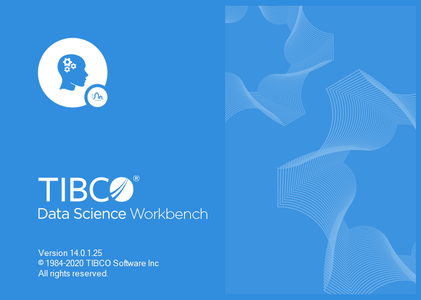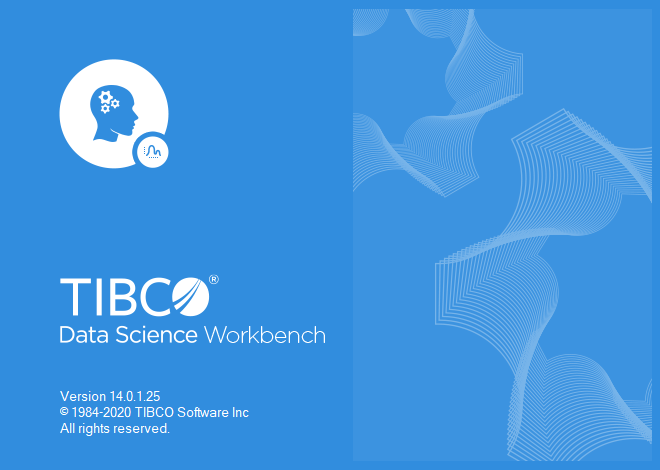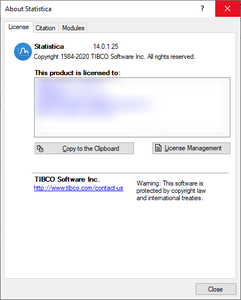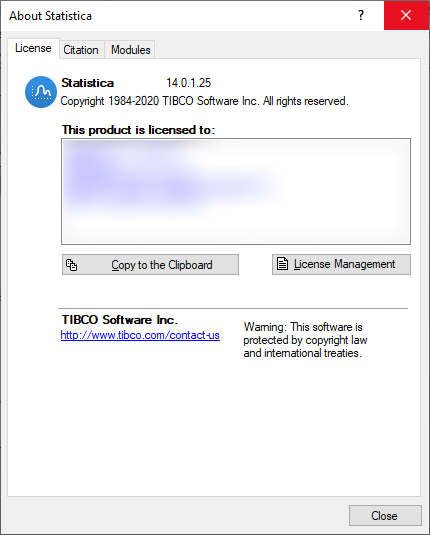TIBCO Statistica 14.0.1.25 | 878 MB
TIBCO Statistica is a flexible analytics system, which allows users to, create analytic workflows that are packaged and published to business users, explore interactively and visualize, create and deploy Statistical, predictive, data mining, machine learning, forecasting, optimization, and text analytic models.
The rapid growth of disparate data types and sources has elevated predictive analytics to critical status across all aspects of commercial and government organizations, including marketing, sales, manufacturing, and service functions.
But predictive analytics can take you only so far. While analysts can use predictive modeling and machine learning to detect patterns in historical data and predict future results in a business context, translating those predictions into business action requires a combination of data blending, data discovery, integrated business rules, and rapid deployment into your business.
TIBCO Statistica integrates data blending, data discovery, predictive analytics, forecasting, text mining, and an embedded business rules engine to deliver prescriptive recommendations to frontline workers and decision-makers. It guides decision-making throughout the organization by prescribing actions and integrating them directly into operational systems.
Statistica enables collective intelligence by integrating with app marketplaces like Algorithmia, Apervita, and AzureML and empowers data scientists by offering Python and R as standard scripting languages. Complete analytic workflows with embedded rules are stored and managed, becoming reusable templates that can be quickly deployed across different processes, product lines, and geographies to improve decision-making and increase productivity and profitability.
Statistica includes not only general purpose Statistical, graphical, and analytic data management procedures, but also comprehensive implementations of specialized methods for data analysis (data mining, business, social sciences, biomedical research, or engineering applications).
All analytic tools offered in the Statistica line of software are available to you as part of an integrated package. These tools can be controlled through a selection of alternative user interfaces and a comprehensive, industry standard (Visual Basic-based) programming language. Interactive user interfaces can be easily customized and the language (Statistica Visual Basic) can be used to automate tasks of any complexity, from simple macros recorded to automate a routine operation, to advanced, large scale development projects (custom analytic extensions that integrate Statistica with other applications or with large, enterprise-wide, Internet or intranet-wide computing environments).
Some of the unique features of the Statistica line of software include:
- The breadth of selection and comprehensiveness of implementation of analytical procedures,
- The unparalleled selection, quality, and customizability of graphics integrated seamlessly with every computational procedure,
- The efficient and user-friendly user interface,
- The fully integrated, industry standard Statistica Visual Basic that adds more than 11,000 new functions to the comprehensive syntax of Microsoft Visual Basic, thus comprising one of the most extensive development environments available, and
- A wide selection of advanced software technologies (see Software Technology) that is responsible for Statistica's practically unlimited capacity, performance (speed, responsiveness), and application customization options.
One of the most unique and important features of the Statistica family of applications is that these technologies allow even inexperienced users to tailor Statistica to their specific preferences. You can customize practically every aspect of Statistica , including even the low-level procedures of its user interface. The same version of Statistica can be used:
- By novices to perform routine tasks using the default (Quick) analysis startup dialogs (containing just a few, self-explanatory buttons), or even by accessing Statistica with their Web browsers (and a highly simplified front end), and
- By experienced analysts, professional statisticians, and advanced application developers who can integrate any of Statistica 's highly optimized procedures (more than 11,000 functions) into custom applications or computing environments, using any of the cutting edge, object-oriented, and/or Web-embedded software technologies.
TIBCO Statistica 14
Statistica 14 solidifies and builds on its best-in-class capabilities for statistical and machine learning (ML/AI) analytics. In particular, Statistica 14 introduces many new and improved capabilities for validated manufacturing processes (GxP) and regulated manufacturing environments, such as the manufacture of pharmaceutical and medical devices. For example, through improved integration with TIBCO Spotfire, Statistica can provide even more effective ML/AI and comprehensive analytics for those applications: Analytics can be delivered through interactive Spotfire UI/UX to empower business and process stakeholders, engineers, and “citizen data scientists” exploring and applying leading-edge analytics for leading-edge results.
Here are just a few highlights:
- Numerous improvements and features to improve and simplify the integration of Statistica Workspaces with TIBCO Spotfire via the Spotfire Data Function
- Support for TIBCO Spotfire Statistics Services for TIBCO Spotfire Server LTS 10.10 and greater, enabling Statistica Workspace-based Data Functions for Spotfire Consumer and Web Client
- Comprehensive support for all OSI PI Event Frame Attributes and other significant enhancements to OSI PI support
- Generation of PMML 4.x for most Prediction Models; efficient scoring of PMML 4.x models generated by Statistica or open-source (Python, R) or commercial modeling platforms
- Numerous enhancements to the Data Entry application, including versioning of Labels and Characteristics in Enterprise Manager, further refinements to support double-blind validated data entry, a new permission/role of “Data Entry Auditor”, and many other enhancements critical to GxP manufacturing
- Numerous additions to statistical analyses and graphs, such as confidence limits for probability plots, display of variance ratios used in 2D orthogonal fit, the new parallel coordinate plot in Data Miner Workspaces, predictor importance statistics for downstream documents from the MARSplines Node (operator), various enhancements to manufacturing and quality control statistics, etc.
- Significant performance and scalability improvements, in particular for large enterprise installations requiring version control and approval processes for model artifacts and data configurations
- Updated Architecture for Version Control and GxP Compliance; 21 CFR Part 11
Statistica 14 implements a simpler and more efficient architecture, eliminating the separate SDMS (Statistica Document Management Server) component. Prior to the V14.0 release, this component (service) was responsible for the versioning of managed artifacts – i.e., Data Configurations, Analysis Configurations, etc. – in the Statistica Server (Enterprise) system. This functionality is primarily in use in so-called "validated implementations", where the analyses, analytic reporting, process monitoring dashboards, data-entry forms and rules, and other analytic artifacts must be "locked-down" and version, consistent with Standard Operating Procedures (SOP's) guiding the respective process. GxP processes are commonly required in the manufacture of pharmaceutical products and medical devices, for example.





